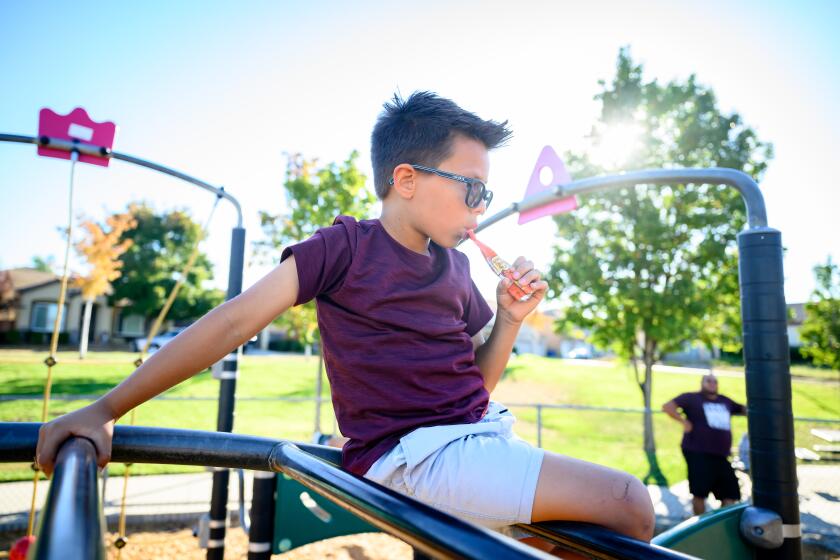More Than Just Saying No
Skeptics might understandably question the purported one-year doubling of teenage drug use found in a study to be released next month by the National Center on Addiction and Substance Abuse. After all, the 12-year-olds who were asked if they knew of a friend or classmate using LSD, cocaine or heroin could have been reporting a friend’s boasting as fact.
Harder to question, however, is the conclusion of several recent studies by the national center and others that show a longer rise in the number of teenagers using drugs (from 1.1 million in 1992 to 2.4 million in 1995) and a decline in the age when they start to use those drugs (the study says children are beginning to smoke and binge-drink at younger ages than ever).
One reason for the nation’s failure to successfully combat teenage drug use was suggested in another study, released last week at the American Psychological Assn. convention. It found that DARE, the country’s most widely used drug prevention program, had no long-term effect on students’ use of alcohol, cigarettes or marijuana. More than a dozen studies have reached similar conclusions, leading some cities, like Seattle and Oakland, to drop the program.
The solution is not to dump DARE’s “just say no” message, however, but to supplement it with proven intervention strategies. One model is Santa Barbara’s “Fighting Back.” Begun in 1990, when youths in that county were using alcohol and cocaine at a rate 30% higher than the state average, the program has reduced rates to or below the state average. It uses peer counseling and programs wherein teachers, judges and others spot problems like depression that lead to substance abuse.
To properly fund such programs, Congress would have to revise current laws that prevent federal substance abuse funds from being distributed to programs that stray in any way from the “just say no” message.
Finally, we must realize that a teenager’s drug use is usually the product of community and family influences as well as one kid’s bad decision. Fashion and other magazines continue to glamorize hollow-eyed, razor-thin “heroin chic” models. Parents too often cynically conclude that their youngsters will inevitably use drugs. Adult use of prescription antidepressants has skyrocketed. Given these sorts of social messages, young people need to be counseled wisely, not merely lectured to just say no.



